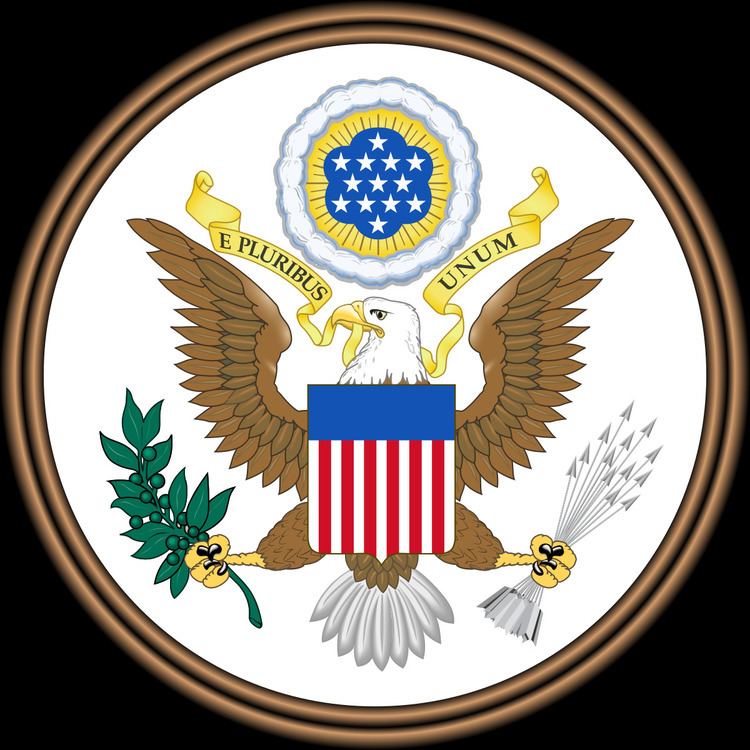Effective June 8, 1906 Statutes at Large 34 Stat. 225 | Public law 59-209 | |
 | ||
Enacted by the 59th United States Congress | ||
The Antiquities Act of 1906, (Pub.L. 59–209, 34 Stat. 225, 54 U.S.C. § 320301–320303), is an act passed by the United States Congress and signed into law by Theodore Roosevelt on June 8, 1906. This law gives the President of the United States the authority to, by presidential proclamation, create national monuments from federal lands to protect significant natural, cultural, or scientific features. The Act has been used over a hundred times since its passage. Its use occasionally creates significant controversy.
Contents
History
The Antiquities Act resulted from concerns about protecting mostly prehistoric Native American ruins and artifacts – collectively termed "antiquities" – on federal lands in the West, such as at Chaco Canyon, New Mexico. Removal of artifacts from these lands by private collectors – "pot hunters," in the language of the time – had become a serious problem by the end of the 19th century. In 1902, Iowa Congressman John F. Lacey, who chaired the House Committee on the Public Lands, traveled to the Southwest with the rising anthropologist Edgar Lee Hewett, to see for himself the extent of the pot hunters' impact. His findings, supported by an exhaustive report by Hewett to Congress detailing the archaeological resources of the region, provided the necessary impetus for the passage of the legislation.
Uses
The Act was intended to allow the President to set aside certain valuable public natural areas as park and conservation land. The 1906 act stated that it was intended for: "... the protection of objects of historic and scientific interest." These areas are given the title of "National Monuments." It also allows the President to reserve or accept private lands for that purpose. The aim is to protect all historic and prehistoric sites on United States federal lands and to prohibit excavation or destruction of these antiquities. With this act, this can be done much more quickly than going through the Congressional process of creating a National Park. The Act states that areas of the monuments are to be confined to the smallest area compatible with the proper care and management of the objects to be protected.
The United States Supreme Court has repeatedly upheld presidential proclamations under the Antiquities Act, ruling each time that the Act gives the president nearly-unfettered discretion as to the nature of the object to be protected and the size of the area reserved.
Some areas designated as National Monuments have later been converted into National Parks, or incorporated into existing National Parks.
The first use of the Act protected a large geographic feature – President Roosevelt proclaimed Devils Tower National Monument on September 24, 1906. President Roosevelt also used it to create the Grand Canyon National Monument – the first step in protecting that place of great historic and scientific interest.
At 583,000 square miles (1,510,000 km2), Papahānaumokuākea Marine National Monument is the largest protected area proclaimed. The smallest, Father Millet Cross National Monument, was a mere 0.0074 acres (30 m2).
For any excavation, the Act requires that a permit (Antiquities Permit) be obtained from the Secretary of the department which has jurisdiction over those lands.
Reduction of powers
Presidential powers under the Act have been reduced twice. The first time followed the unpopular proclamation of Jackson Hole National Monument in 1943. The 1950 law that incorporated Jackson Hole into an enlarged Grand Teton National Park also amended the Antiquities Act, requiring Congressional consent for any future creation or enlargement of National Monuments in Wyoming. The second time followed Jimmy Carter's use of the Act to create fifty-six million acres (230,000 km²) of National Monuments in Alaska. The Alaska National Interest Lands Conservation Act requires Congressional ratification of the use of the Antiquities Act in Alaska for withdrawals of greater than 5,000 acres (20.2 km²).
Use in popular culture
The Antiquities Act is referenced in The West Wing season one episode "Enemies", where President Bartlet uses it to counter an amendment attached to a bill by Congress that would allow an area of the Montana wilderness to be strip-mined. However, the episode erroneously states that the President can declare a National Park instead of a National Monument, which would have been more accurate.
